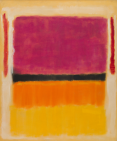Abstract
This second issue of Interfaces: A Journal fo Medieval European Literatures addresses the subject of "The Theory and Phenomenology of Love." It brings together readings of medieval representations and explanations of love as an affection, passion, sentiment, attraction, or tension, with work on the connections between literary discourses of love and the history both of emotions and gender roles. Approaching the subject of the nature of love, and the ways it manifests itself, the authors create links between scientific and poetic discourse and highlight the relationship between the experiences of love, described and treated in literary texts, and the specific historical, cultural, and social environments in which those texts were produced.
Not only do the articles reach original results within their fields; taken as a whole, the dossier, ranging as it does from the Late Antiquity to the fifteenth century, and across a Europe situated within a wider Eurasian space, offers deep insights into social history, the history of emotions, and the study of gender and sexuality.
Except where otherwise noted, the content of this site is licensed under a Creative Commons Attribution-ShareAlike 4.0 International (CC BY-SA 4.0).
Authors retain copyright of their work. The CC BY-SA 4.0 licence allows readers to copy and redistribute the material in any medium or format, and to remix, transform, and build upon the material for any purpose, even commercially, as long as the original author is credited and as long as any works that are derived from the original are distributed under the same terms.

